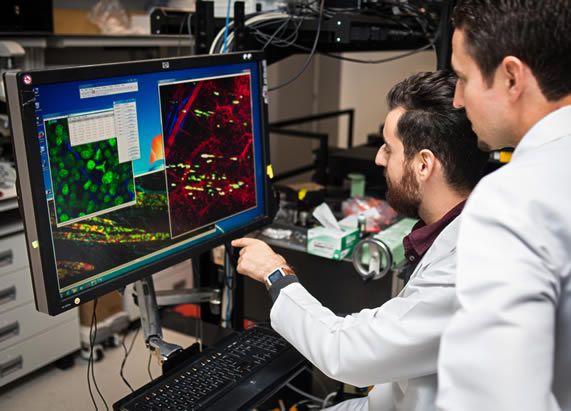PhD Public Seminar: CANA QUAVE
When & Where
January 30
10:00 AM - 11:00 AM
UTHH McGovern Medical School, MSB B.100 (View in Google Map)
Contact
- Joy Lademora
- 713-500-9872
- [email protected]
Event Description
Cana Quave (Advisor: Fabricio Do Monte, DVM, PhD)
Investigating Prefrontal Cortex Neuronal Signatures of Opioid-induced Risk-taking Behavior
Opioid use disorder occurs alongside impaired risk-related decision-making, but the underlying neural correlates are unclear. We developed an approach-avoidance conflict task using a modified conditioned place preference procedure to study neural signals of risky opioid seeking in the prefrontal cortex, a region implicated in executive decision-making. Following morphine conditioned place preference, rats underwent a conflict test in which fear-inducing cat odor was introduced in the previously drug-paired side of the apparatus. While the saline-exposed control group avoided cat odor, the morphine group included two subsets of rats that either maintained a preference for the paired side despite the presence of cat odor (Risk-Takers) or exhibited increased avoidance (Risk-Avoiders), as revealed by K-means clustering. Single-unit recordings from the prelimbic cortex (PL) demonstrated decreased neuronal activity upon acute morphine exposure in both Risk-Takers and Risk-Avoiders, but this firing rate suppression was absent after repeated morphine administration. Risk-Avoiders also displayed distinct post-morphine excitation in PL which persisted across conditioning. During the preference test, subpopulations of PL neurons in all groups were either excited or inhibited when rats entered the paired side. Interestingly, the inhibition in PL activity was lost during the subsequent conflict test in both saline and Risk-Avoider groups but persisted in Risk-Takers. Additionally, Risk-Takers showed an increase in the proportion of PL neurons displaying location-specific firing in the drug-paired side from the preference to the conflict test. Together, our results suggest that persistent PL inhibitory signaling in the drug-associated context during motivational conflict may underlie increased risk-taking behavior following opioid exposure.
Advisory Committee:
- Fabricio Do Monte, DVM, PhD, Chair
- Michael Beierlein, PhD
- Therese Kosten, PhD
- Francesco Versace, PhD
- Consuelo Walss-Bass, PhD
Cana Quave (Advisor: Fabricio Do Monte, DVM, PhD)
Investigating Prefrontal Cortex Neuronal Signatures of Opioid-induced Risk-taking Behavior
Opioid use disorder occurs alongside impaired risk-related decision-making, but the underlying neural correlates are unclear. We developed an approach-avoidance conflict task using a modified conditioned place preference procedure to study neural signals of risky opioid seeking in the prefrontal cortex, a region implicated in executive decision-making. Following morphine conditioned place preference, rats underwent a conflict test in which fear-inducing cat odor was introduced in the previously drug-paired side of the apparatus. While the saline-exposed control group avoided cat odor, the morphine group included two subsets of rats that either maintained a preference for the paired side despite the presence of cat odor (Risk-Takers) or exhibited increased avoidance (Risk-Avoiders), as revealed by K-means clustering. Single-unit recordings from the prelimbic cortex (PL) demonstrated decreased neuronal activity upon acute morphine exposure in both Risk-Takers and Risk-Avoiders, but this firing rate suppression was absent after repeated morphine administration. Risk-Avoiders also displayed distinct post-morphine excitation in PL which persisted across conditioning. During the preference test, subpopulations of PL neurons in all groups were either excited or inhibited when rats entered the paired side. Interestingly, the inhibition in PL activity was lost during the subsequent conflict test in both saline and Risk-Avoider groups but persisted in Risk-Takers. Additionally, Risk-Takers showed an increase in the proportion of PL neurons displaying location-specific firing in the drug-paired side from the preference to the conflict test. Together, our results suggest that persistent PL inhibitory signaling in the drug-associated context during motivational conflict may underlie increased risk-taking behavior following opioid exposure.
Advisory Committee:
- Fabricio Do Monte, DVM, PhD, Chair
- Michael Beierlein, PhD
- Therese Kosten, PhD
- Francesco Versace, PhD
- Consuelo Walss-Bass, PhD







